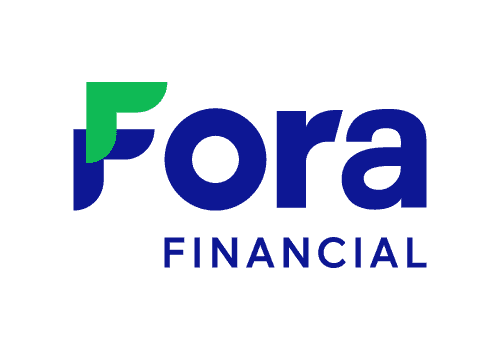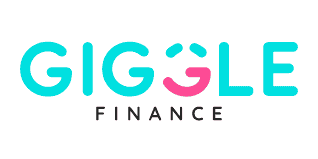| Lender | NerdWallet rating | Best For | Max loan amount | Min. credit score | APR range | Max term length | Learn more |
|---|---|---|---|---|---|---|---|
with Fundera by NerdWallet | Read review | Best for large loan amounts | $5,000,000 | 650 | 10.50-14.00% | 25 years | with Fundera by NerdWallet |
with Fundera by NerdWallet | 4.7
/5
| Best for bad credit borrowers | $1,500,000 | 570 | Undisclosed | 18 months | with Fundera by NerdWallet |
with Fundera by NerdWallet | Read review | Best for no credit check | $10,000 | 300 | Undisclosed |
| with Fundera by NerdWallet |
with Fundera by NerdWallet | 5.0
/5
| Best for lines of credit | $250,000 | 625 | 14.00-48.00% | 6 months | with Fundera by NerdWallet |
with Fundera by NerdWallet | 4.7
/5
| Best for flexible repayment options | $100,000 | 625 | 35.00-80.00% | 24 months | with Fundera by NerdWallet |
with Fundera by NerdWallet | 4.9
/5
| Best for startup businesses | $150,000 | 600 | 36.00-99.00% | 6 months | with Fundera by NerdWallet |
with Fundera by NerdWallet | 4.2
/5
| Best for established businesses that need fast financing | $500,000 | 660 | 15.22-45.00% | 7 years | with Fundera by NerdWallet |
best working capital loans: More details
Best for large loan amounts
SBA 7(a) loan
with Fundera by NerdWallet
Pros
- Large borrowing maximums.
- Interest rates are capped.
- Long repayment terms available.
Cons
- Collateral is typically required.
- Longer processing times than online lenders.
Pros
- Large borrowing maximums.
- Interest rates are capped.
- Long repayment terms available.
Cons
- Collateral is typically required.
- Longer processing times than online lenders.
with Fundera by NerdWallet
Best for bad credit borrowers
Fora Financial - Online term loan
with Fundera by NerdWallet
Pros
- Cash can be available quickly.
- Get a discount for prepaying.
- No collateral required.
- Low minimum credit score requirement.
Cons
- Charges a factor rate that makes it more difficult to compare costs with other lenders.
- Can’t build business credit.
- Longest loan term is 18 months.
- Charges an origination fee.
Pros
- Cash can be available quickly.
- Get a discount for prepaying.
- No collateral required.
- Low minimum credit score requirement.
Cons
- Charges a factor rate that makes it more difficult to compare costs with other lenders.
- Can’t build business credit.
- Longest loan term is 18 months.
- Charges an origination fee.
with Fundera by NerdWallet
Best for no credit check
Giggle Finance - Merchant cash advance
with Fundera by NerdWallet
Pros
- No minimum credit score requirement.
- Same-day funding available.
- Specifically designed for freelancers and self-employed individuals.
Cons
- Funding maxes out at $10,000 ($20,000 for repeat customers).
- Factor rate and fee information not available on website.
- Charges an origination fee.
Pros
- No minimum credit score requirement.
- Same-day funding available.
- Specifically designed for freelancers and self-employed individuals.
Cons
- Funding maxes out at $10,000 ($20,000 for repeat customers).
- Factor rate and fee information not available on website.
- Charges an origination fee.
with Fundera by NerdWallet
Best for lines of credit
Bluevine - Line of credit
with Fundera by NerdWallet
Pros
- Cash can be available within 12 to 24 hours.
- Can be used to build business credit.
- Low minimum credit score requirement.
Cons
- Requires weekly payments.
- Not available in North Dakota, South Dakota or Nevada.
- Rates can be high compared with traditional lenders.
Pros
- Cash can be available within 12 to 24 hours.
- Can be used to build business credit.
- Low minimum credit score requirement.
Cons
- Requires weekly payments.
- Not available in North Dakota, South Dakota or Nevada.
- Rates can be high compared with traditional lenders.
with Fundera by NerdWallet
Best for flexible repayment options
Headway Capital - Line of credit
with Fundera by NerdWallet
Pros
- Flexible qualification requirements.
- No prepayment penalties.
- Funds available by next business day after approval.
Cons
- Most borrowers are subject to a 2% draw fee.
- Not available in all U.S. states.
Pros
- Flexible qualification requirements.
- No prepayment penalties.
- Funds available by next business day after approval.
Cons
- Most borrowers are subject to a 2% draw fee.
- Not available in all U.S. states.
with Fundera by NerdWallet
Best for startup businesses
Fundbox - Line of credit
with Fundera by NerdWallet
Pros
- Financing available within one business day after approval.
- Simple application with minimal documentation required.
- Low minimum credit score, time in business and annual revenue requirements.
- No prepayment penalties, account maintenance fees or inactivity fees.
Cons
- Rates are high compared with traditional banks.
- Weekly repayments required over a short term (maximum of 24 weeks).
Pros
- Financing available within one business day after approval.
- Simple application with minimal documentation required.
- Low minimum credit score, time in business and annual revenue requirements.
- No prepayment penalties, account maintenance fees or inactivity fees.
Cons
- Rates are high compared with traditional banks.
- Weekly repayments required over a short term (maximum of 24 weeks).
with Fundera by NerdWallet
Best for established businesses that need fast financing
iBusiness Funding - Online term loan
with Fundera by NerdWallet
Pros
- Cash can be available within two business days.
- Competitive rates among online lenders.
- Terms up to seven years.
- iBusiness Funding also offers SBA loans up to $5 million.
Cons
- Charges an origination fee.
- Must be in business for a minimum of 24 months.
- Minimum credit score is higher than some other lenders.
Pros
- Cash can be available within two business days.
- Competitive rates among online lenders.
- Terms up to seven years.
- iBusiness Funding also offers SBA loans up to $5 million.
Cons
- Charges an origination fee.
- Must be in business for a minimum of 24 months.
- Minimum credit score is higher than some other lenders.
with Fundera by NerdWallet
What is a working capital loan?
- Quick to fund.
- Have short repayment periods.
- Issued by banks, credit unions or online lenders.
Types of working capital loans
Pros and cons of working capital loans
Pros
- Suitable for cash flow gaps and seasonal slows.
- Flexible funds that can be used for a variety of purposes
- Accessible to a wide variety of businesses.
- Can fund quickly.
Cons
- Some lenders may require daily or weekly payments.
- Can be expensive.
- Lenders may charge interest as a factor rate — which can make it difficult to understand the cost of your financing.
How to get a working capital loan
How to compare working capital loans
Alternatives to working capital loans
Business credit cards
Small-business grants
Crowdfunding
Frequently asked questions
How Fundera by NerdWallet works
Fill out one simple application
Answer a 3-minute questionnaire about your business to get personalized lending options. It’s free and won’t impact your credit score.
See your business loan options
Compare interest rates and repayment terms to choose the best product for your needs.
Get your loan
If the lender approves you, you’ll sign closing documents in order to receive funds. Some lenders can approve and fund loans within one business day.










